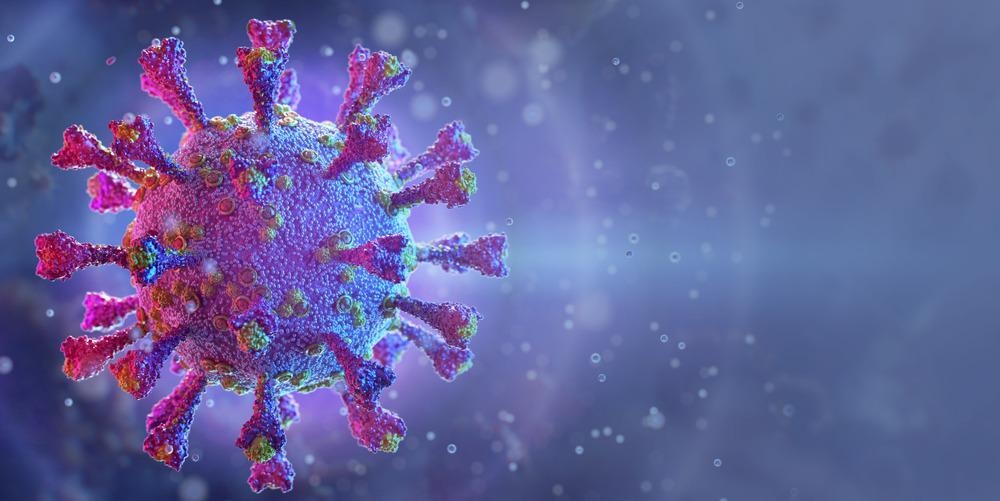A team of researchers from the University of Strathclyde, Glasgow, and the Indian Institute of Technology (IIT), Bombay, have established a new, low-cost sensor capable of detecting tiny fragments of the SARS-CoV-2 virus that is responsible for the COVID-19 pandemic within wastewater.

Image Credit: Corona Borealis Studio/Shutterstock.com
The invention will be of most use to low- and middle-income countries which have struggled to implement mass testing in order to curb the spread of the virus. The research, published in the journal Sensors and Actuators B: Chemical, will enable countries with fewer resources for testing and track and trace systems to monitor the spread of the virus over large areas. It could be one of many vital methods to gaining control of the pandemic in low- and middle-income countries.
Low- and Middle-Income Countries Feel Greater Burden of COVID-19
While many Western countries have seemingly gained control of the spread of COVID-19, with vaccine roll-outs and widespread testing helping to reduce the number of cases and deaths and allow ‘normal life’ to resume after long months under tight restrictions, many low- and middle-income countries continue to struggle to access the necessary diagnostic tests to control the spread of the disease.
Over the course of 2021, the burden of the COVID-19 pandemic shifted towards low- and middle-income countries as wealthier countries controlled the virus with widespread testing, restrictions, and vaccines. As of January 2021, low- and middle-income countries accounted for just 7% of new COVID-19 cases and fewer than 10% of new deaths. By May 2021, these figures had significantly risen, with low- and middle-income countries accounting for 52% of new COVID-19 cases and 40% of new deaths. During the same period, rates of news cases and death had fallen in high-income countries.
There is an urgent need for effective and cost-effective methodologies to track the spread of the virus in low- and middle-income countries to allow them to take control of the virus, which has proven to be somewhat possible in high-income countries. Now, a team across institutions in Glasgow and Bombay have developed such a technique that may prove invaluable to fighting COVID-19 in lower-income countries.
Using Biosensors to Detect SARS-CoV-2 RNA
The innovation incorporates a sensor into portable equipment that can carry out the standard Polymerase Chain Reaction (PCR) test that is widely being used to detect the presence of the SARS-CoV-2 virus that is the cause of the COVID-19 pandemic. Currently available PCR tests are less accessible to low- and middle-income countries as they require expensive chemicals and lab infrastructure to process real-time quantitative PCR tests.
The team tested the sensors to identify SARS-Cov-2 in wastewater. The samples used were collected from a sewage treatment plant based in Mumbai, India, into which researchers added SARS-Cov-2 Ribonucleic Acid (RNA). The team created a biosensor with printed circuit board electrodes designed to detect SARS-CoV-2 RNA which has been combined with a readily available salt, methylene blue, which produces a measurable electrochemical signal.
The results showed that the sensor was effective at detecting SARS-Cov-2 RNA in relatively low concentrations, as low as just 10 picograms per microlitre (pg/μl). The team’s new technique utilizes reusable and easy-to-clean electrodes that do not alter through use and, therefore, have a long shelf life, making the test even more cost-effective.
The Chancellor’s Fellow in the Department of Civil & Environmental Engineering at the University of Strathclyde spoke of the potential application of the newly established device:
Many low- to middle-income countries face a challenge in tracking COVID-19 in people because of limited access to the necessary facilities for mass testing. Looking for traces of the virus within wastewater would enable public health officials to get a better understanding of how prevalent the disease is in a larger area.”
The gold-standard method of real-time PCR testing (qPCR) is not currently accessible to low- and middle-income countries due to its reliance on expensive laboratory equipment and human workers with specific skill sets. In addition, given the cost of the current testing protocol, low- and middle-income countries with access to such methods would need to use them to test human samples as a priority, with wastewater tests neglected. The newly established method offers a low-cost alternative to the current gold-standard method which gives low- and middle-income countries the opportunity to monitor the spread of COVID-19 by monitoring wastewater.
An added benefit of the new method is that it has the potential to be developed to also be used to test for other viruses. It is likely that the new technology will help to prevent the spread of COVID-19 in low- and middle-income countries by offering an accurate method of monitoring the virus. In the future, it may also play a vital role in preventing the spread of other contagious viruses.
References and Further Reading
COVID-19 Data Explorer: Global Humanitarian Operations Monthly Highlights, 31 May 2021. OCHA. https://reliefweb.int/report/world/covid-19-data-explorer-global-humanitarian-operations-monthly-highlights-31-may-2021
Kumar, M., Nandeshwar, R., Lad, S., Megha, K., Mangat, M., Butterworth, A., Knapp, C., Knapp, M., Hoskisson, P., Corrigan, D., Ward, A., Kondabagil, K. and Tallur, S., 2021. Electrochemical sensing of SARS-CoV-2 amplicons with PCB electrodes. Sensors and Actuators B: Chemical, 343, p.130169. https://www.sciencedirect.com/science/article/pii/S0925400521007383?via%3Dihub
Scientists develop low-cost sensor that can detect COVID-19 in wastewater. The University of Strathclyde. Available at: https://www.strath.ac.uk/whystrathclyde/news/scientistsdeveloplow-costsensorthatcandetectcovid-19inwastewater/
Disclaimer: The views expressed here are those of the author expressed in their private capacity and do not necessarily represent the views of AZoM.com Limited T/A AZoNetwork the owner and operator of this website. This disclaimer forms part of the Terms and conditions of use of this website.